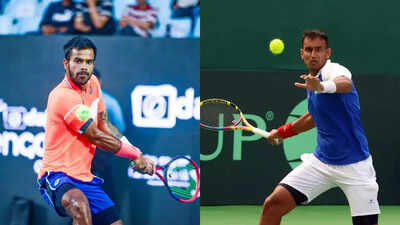Where are India’s singles tennis players? | Tennis News

The country has 9 players in the top 150 of individual doubles rankings, but doubles titles are not an indicator of the state of the game…
In Feb, India hosted four ATP Challenger tournaments, categorized as the launch pad to the world stage.
As the travelling circus pegged tents in Chennai, Delhi, Pune and Bengaluru, the common thread running through the tournaments was the lack of Indian presence in singles.
Go Beyond The Boundary with our YouTube channel. SUBSCRIBE NOW!
Indian players featured in 13 first round, main draw singles matches in four weeks. Twelve of those 13 starts were courtesy wildcards.
Only one player — Karan Singh in Bengaluru — came through the qualifying field.
Who’s that IPL player?
The most worrying stat was that out of the 13 starts the host nation had only one match win in four weeks — Mukund Sasikumar in Delhi.
Former No. 1 Somdev Devvarman asked the question on every stakeholder’s mind: ‘Who are we holding these tournaments for?’
Briton Jay Clarke, who stayed on in India for eight weeks in Feb-March, had an average run in the Challengers, but the 26-year-old won two titles from four finals in Futures events held in Chandigarh, Ahmedabad and Bengaluru.
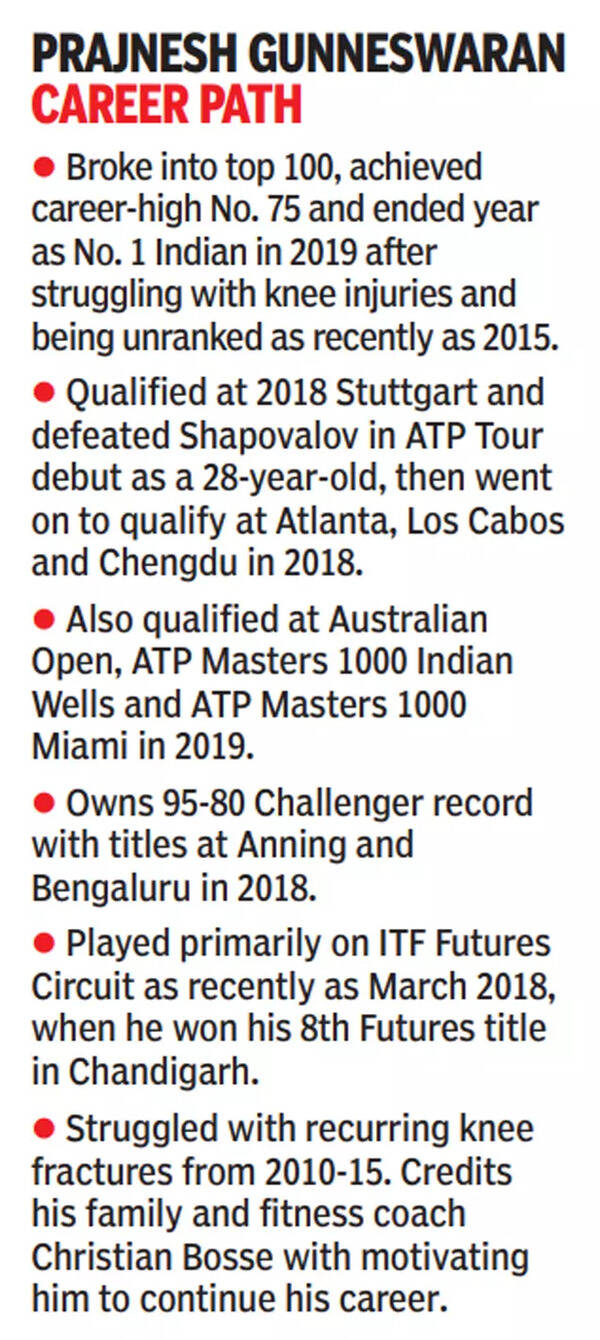
Agreed, the India No. 1 Sumit Nagal, presently ranked 165, the only Indian in the top 450 of the ATP rankings, was competing in South America at the time. Still, this performance, or the lack of it at home in the biggest events India host, is unacceptable.
At the same time, in these very weeks in Feb, India had a presence in the doubles final in all four Challengers, finishing with two titles, even though our best doubles players — Yuki Bhambri and Rohan Bopanna — were part of richer draws elsewhere in the world.
India has nine players in the top 150 of the individual doubles ranking, thanks to Bopanna’s ‘Doubles Dream of India’, a programme that supports Indian doubles pros. It was launched in April 2022 and offers resources like travelling coaches, physios and organizes pre-season camps.
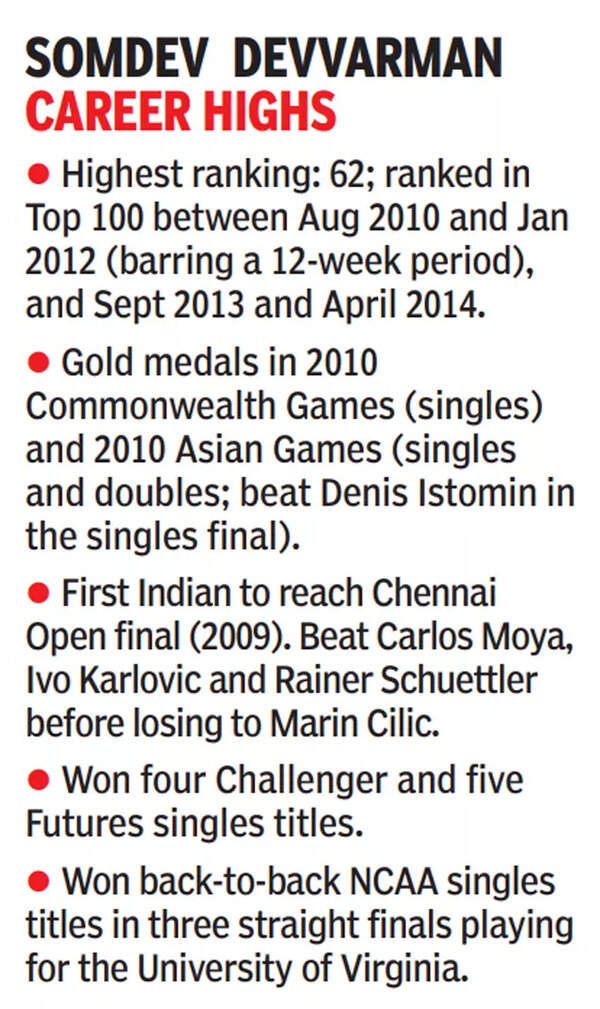
It is in singles, however, where Indian tennis enjoyed stirring success dating back to the 1960s.
There was Ramanathan Krishnan, twice Wimbledon semifinalist 1960-61. Vijay Amritraj was a four-time Grand Slam quarterfinalist who rose to No. 16 in the ATP rankings. Ramesh Krishnan won eight ATP singles titles, rising to No. 23 in the rankings. Leander Paes was Olympics singles bronze medallist (1996) who rose to No. 73. Devvarman spent all but 12 weeks between Aug 2010 and Jan 2012 ranked in the top 100, scaling to No. 62. In women’s, Sania Mirza – the pathbreaker — was ranked at a career-high No. 27 in singles.
It was Paes (18 major titles, men’s doubles and mixed doubles) in tandem with Bhupathi (12), who created the doubles pathway for Indians. A route that was blazed by Bopanna, who at 45, is the sport’s poster boy for longevity. However, doubles and mixed doubles titles coming India’s way aren’t an indicator of the state of the game in the country.
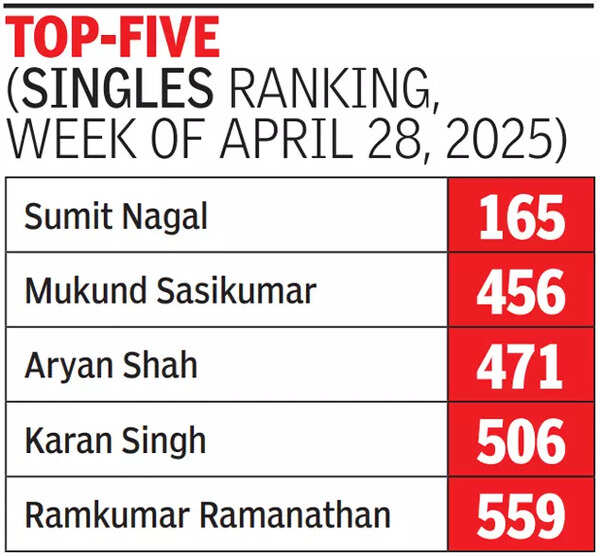
The most basic measure of the difference shows up in prize money on offer on the ATP Tour (not including Grand Slams), where in the 250, 500 and 1000 Series events, the singles prize money in a calendar year totals to $131,066,412 while the doubles pot is at $ 32,254,728. The difference in figures is four times.
So, where then are India’s singles players? Devvarman — who has long fought the difficult fight, and last year hauled the All India Tennis Association to court for being a ‘serial offender’ in violating the Sports Code — said it was no coincidence that every player India has produced since the 40-year-old started playing, save for Bopanna, has moved out of the country to pursue the sport.
“Our coaching system is not good enough,” he told TOI from his base in Chennai. “How can people who were coaching when I was coming up in 1990, still be coaching? If this is quality, then why hasn’t anybody coached outside India? Why don’t we have the experience and the expertise to at least take someone like Mukund Sasikumar (India’s No. 2, ranked 456) to the Grand Slam qualifiers stage? Indian tennis is missing young coaches to take us to the next level.”
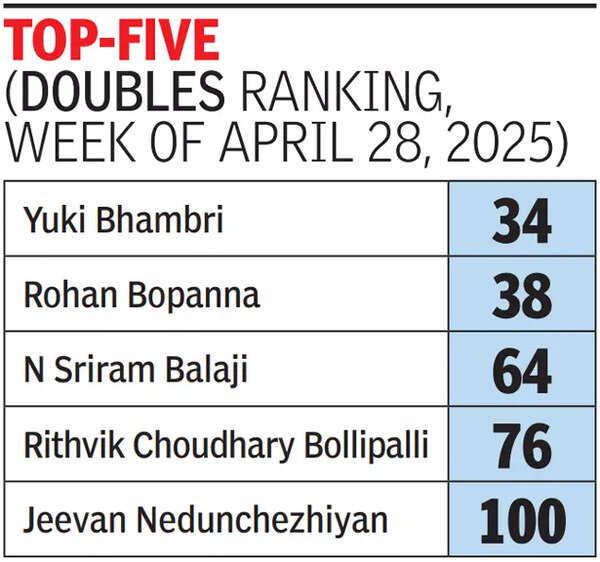
At a time when Indian sport has exploded in every other discipline, in areas like finance, expertise and audience attention, tennis appears to be receding into a deafening slowdown.
Badminton has already seen its peak, chess is thriving, golf is flourishing, track and field is on the Olympic podium, the power disciplines — pugilists, wrestlers, lifters — are flexing their muscles and hockey is sounding the boards again. But tennis is languishing.
The answer to the question of why India’s best junior talents are based outside the country lies in the closure of the National Tennis Centre in New Delhi last year. It had no great results to write home about in four years.
Poll
Do you think Indian tennis is facing a decline in singles performance?
Manas Dhamne, 17, ranked 760 in the ATP rankings, trains in Italy. Maaya Rajeshwaran Revathi is 15 years old and is in Spain, as is 14-year-old Vedant Mohan, while the 12-year-old Bengaluru girl Srishti Kiran leaves in a week’s time for the United States. She’s on a 15-month tennis scholarship.
Prajnesh Gunneswaran, the stylish left-hander who was ranked 75 six years ago when India had five men in the top 250 of the rankings, said the problem wasn’t about infrastructure or opportunities.
“We don’t have the support staff with the fire or knowledge,” Gunneswaran, 35, said. “You can draw a line on a field and work with players if you know how to get things done. We have good infrastructure all over the country, but we haven’t produced a single player.”
Last September, in a Davis Cup Group 1 clash against Sweden in Stockholm, the Indian think tank displayed a remarkable lack of imagination or ambition by playing a doubles specialist in a live singles tie, then ‘rewarded’ another player for loyalty instead of blooding a young talent who would’ve gained in experience.
Gunneswaran pointed at Asian rivals China and Japan, who in the last 10 years have invested heavily in hiring top coaches and trainers from Europe to improve their game.
China now has three men aged 28 and under in the top 75 of the ATP singles ranking and two women in the WTA top 50 while Japan has seven men in the top 200 and an equal number of women in the same range.
“Now, 10 years later, the players that came through that system are investing back, helping the next generation of players,” he said.
Sunder Iyer, secretary of the MSLTA and joint-secretary of the AITA, said the tournament cycle in the country had slowed to a trickle three-four years ago.
“I accept that we have lost a generation of players,” Iyer said, “These last two-three years things have been better and we are already seeing results, like with the women in the Billie Jean King Cup recently, but there are things that we need to change in the tournament structure to help the younger crop of players.”
Iyer added, “We need to do in singles what we have done in doubles. Nothing has been done so far. It is the parents who are working for their children’s progress.”
The system is broken and until it’s fixed, it’s each player and their families to themselves. Tennis is a lonely sport, and in India there seems to be little love, especially for singles.

